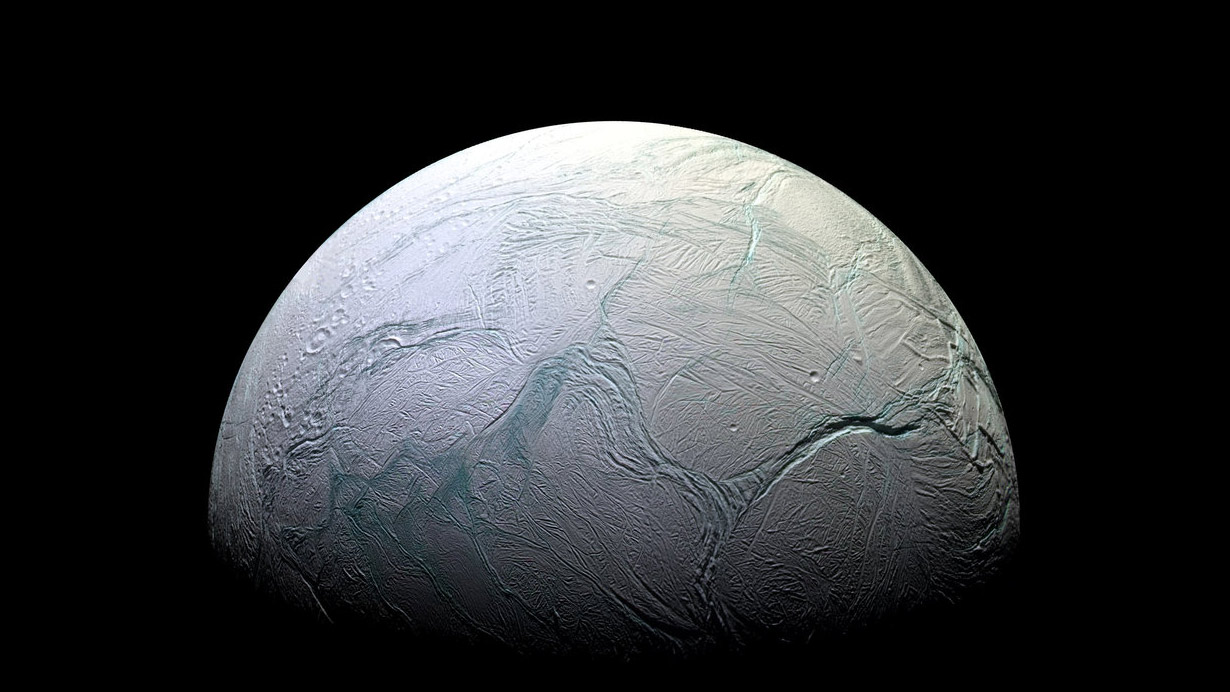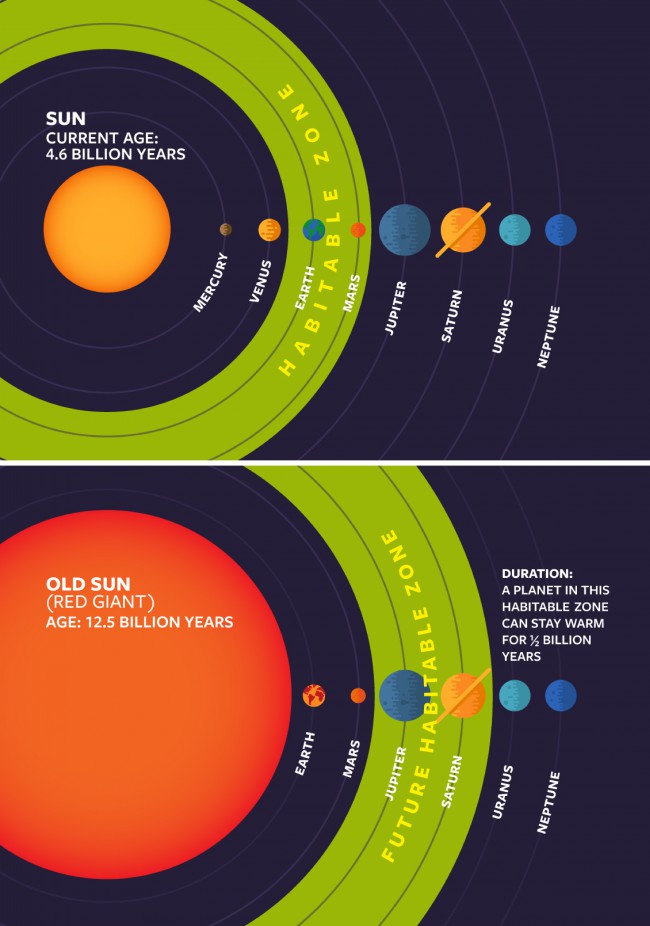
In a few billion years, the water in the oceans will evaporate, the atmosphere will burn out, our Sun will become a red giant. It will be a real end to all life on Earth, but on the external borders of the Solar system, the fun has just started. Europa and Enceladus will turn into moons with liquid oceans, offering a safe haven to any posthumanism forms of life that will be able to escape from the lava-covered home planet.
This is at least one possible scenario for our species and life in the Solar system, if you believe the new computer models developed by the astronomers Ramses Ramirez and Lisa Kaltenegger, the details of which were recently published in the Astrophysical journal. A key conclusion of this study, stating that both of these icy moons can be habitable, as soon as the Sun will grow old and will increase in size, may be one explanation as to where else in the galaxy we could detect life.
“We know that in the future our Sun will become too hot and bright for life on Earth. Science fiction is often considered an option when people move to Mars and other planets. Now we know where you can go,” says Kaltenegger.
This study not only considers the possibility of migration of mankind into a more remote orbit with the aging of the Sun, but also alludes to the fact that any possible life imprisoned in captivity icy satellites, maybe, finally, after five billion years to show everyone the eye.
To date, astronomers interested in the discovery of habitable worlds outside the Solar system, followed closely only for those planets and stars that were most similar to the Earth and the Sun. In other words, we are talking about small, rocky worlds located in the so-called habitable zones of those stars, the core of which burns the hydrogen. Once the star ends hydrogen fuel, they do not die, but rather move to another state, changing essentially only a type. Our Sun, for example, over time, or rather, in about five billion years, will enter the red giant phase, turning along with it all, from mercury to Mars, to ashes.
If you look at it from the perspective of the Earth, all this, of course, very sad — it is unlikely someone will please news about the Apocalypse. However, despite the fact that the inner Solar system will turn into burnt embers, more remote areas that are close to external borders, will become more suitable for habitation. The same version of the evolution of habitable zones can affect our entire galaxy, if we consider that all stars located at its center, would also soon enter the phase of red giants.

The boundaries of the habitable zone now and in the future (marked in green) under the new models of Ramirez and Kaltenegger
All this leads to the question: can the red giants and their developed in the habitable zone to support life?
To find out, Ramirez and Kaltenegger created models of different habitable zones, which would be typical of stars of different sizes, and their usage in the phase of red giants. It is logical to assume that with the increase in the size of the star increases, but rather are moved and the boundaries of the habitable zone. However, the key question here is how long it will remain habitable zone for the red giant phase. The answer to this question has already been found. It turns out that everything will depend on the mass of the initial sequence of this star.
According to a new study, the habitable zone of the red giant in our Solar system will exist for about 500 million years. However, initial lower-mass stars can sustain habitable zones of red giants phase of up to 9 billion years. And this is even more than the history of our entire Solar system.
“This effectively destroys the idea that the inhabited can only be considered as systems with the same stars, like our Sun, and with him of the same age,” says Kaltenegger.
“We are in fact the observers’ navigation map in the habitable zone for all types of stars,” Ramirez agrees and adds: “This is actually a tool to search for all potentially habitable planets.”
Lately the icy satellites Europa and Enceladus are increasingly viewed by scientists as the most probable bastions for extraterrestrial life. Both moons have a passionate and hard core. And in the case of Enceladus, scientists generally have quite strong evidence that beneath the surface is a whole ocean of the world. The most interesting in the new study, lies in the implication that such frozen worlds like Enceladus, may in the distant future become a real water Paradise. By the time any form of life trapped deep in the depths of the ocean, closer to the warm springs, can come to the surface and create earth-like biosphere, that will be quite visible to alien astronomers.
Whatever it was, but we learn it in relation to the Solar system will be able personally soon. However, the planets and their moons orbiting around red giants at the moment, can you give us some clues. Astronomers to date known 23 red giants within 100 light years from Earth, and about a hundred other stars that are approaching the phase of red giants.
“It will be amazing to detect signs of life in the world, which has always been known as an icy desert, but is now evolved inside the habitable zone,” says Kaltenegger.
“This is, no doubt, would have helped to find the answer to the question of whether the existence of life in the subsurface ocean. No matter what we find on Europa or Enceladus, this finding will be very interesting and important part of the overall puzzle”.
Of course, by that time, as the outer boundaries of the Solar system will become habitable, our descendants may have to live and exist as entities inside of a cloud server inside the Dyson sphere, sprawling across the galaxy. Who knows, maybe on Earth for that moment and will remain several residents waiting for the most opportune moment for launching their luxury yachts in European waters.
One thing is clear, life will certainly be a lot of options for further development and existence even after our disappearance.
After the death of the Earth life in the Solar system will not disappear
Nikolai Khizhnyak
